Britain’s HMS Prince of Wales has been pictured leading a NATO fleet as the military alliance carries out its largest joint exercise in decades.
The Royal Navy aircraft carrier, which cost £3.5bn to build, led 14 ships in formation during an exercise in the North Sea as part of exercise Nordic Response 24, which aims to train the alliance’s ability to reinforce borders from northern Europe.
The 65,000-ton ship was seen on Wednesday flanked by the US destroyer USS Paul Ignatius and the Spanish frigate ESPS Almirante Juan de Borbón as Swedish and Finnish fighter jets flew overhead.
Operating around Norway’s frozen fjords through Friday, the carrier strike group will practice defensive maneuvers and amphibious landings to “recapture allied territory.”
Exercise Nordic Response 24 is part of the broader exercise Steadfast Defender 24, NATO’s largest exercise since the Cold War, bringing together more than 90,000 troops from all 32 countries to train in unison as the war draws ever closer to Europe in the midst of the current Russian invasion of Ukraine. .
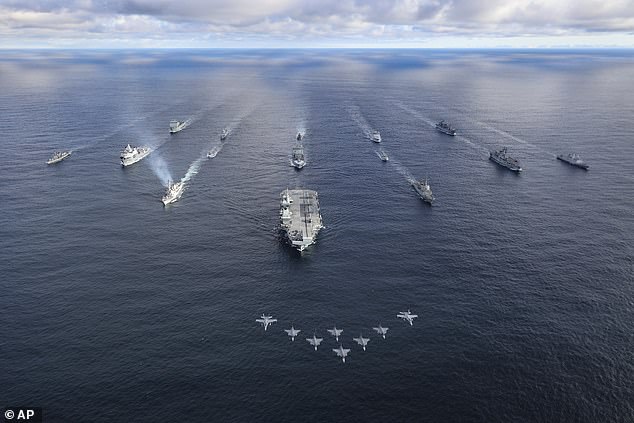
The Royal Navy’s aircraft carrier HMS Prince of Wales leads a formation of fifteen ships as aircraft pass at sea for exercise Nordic Response 24
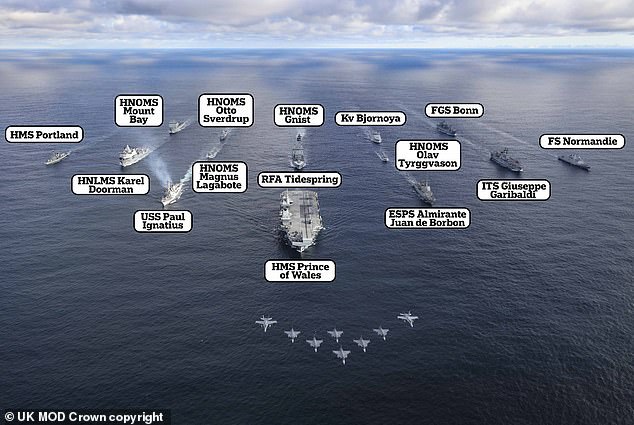

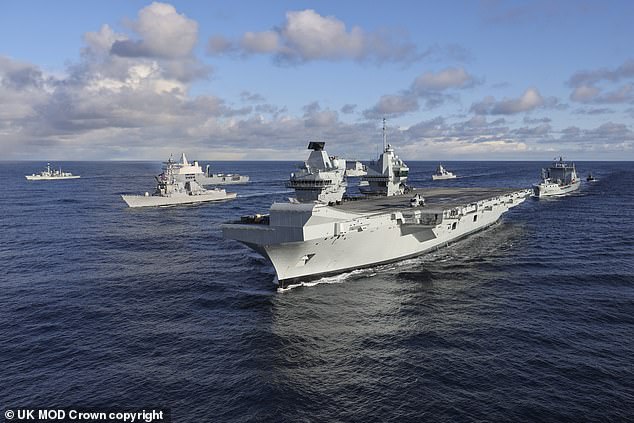

HMS Prince of Wales leads the formation of fifteen ships on 13 March 2024 through exercises that will continue until Friday.
Behind the Prince of Wales were Britain’s HMS Portland, Germany’s HNLMS Karel Doorman, Norway’s HNoMS Magnus Lagabøte, Britain’s RFA Tidespring, HNoMS Olav Tyrggvason, Italian aircraft carrier ITS Giuseppe Garibaldi and French frigate FS. Normandy.
Pictured behind them were RFA Mounts Bay, the Norwegian frigate HNoMS Otto Sverdrup, the HNoMS Gnist, the Norwegian Kv Bjornoya and the German replenishment ship FGS Bonn.
The aircraft that participated in the parade were six Finnish F18s and two Swedish JAS-39s.
Land, sea and air exercises will take place along Norway’s Arctic coast until Friday, involving more than 20,000 troops, more than 50 frigates, submarines and other ships, and some 110 fighter jets. , helicopters and other aircraft.
norwegian armed forces saying Most of the activity took place between March 3 and 14, starting in Bjerkvik and inland Troms, and extending northeast to Alta and central Finnmark.
‘Throughout the winter, there has also been a widespread Allied military presence in northern Norway, with training, preparations and various Allied exercise activities.
“This has been done to ensure that allied forces are as well prepared as possible to train in Nordic winter conditions.”
Steadfast Defender, more broadly, will involve up to 90,000 troops from all 32 NATO allies, linking US forces with European armies in Europe between January and May 2024 to “demonstrate NATO’s ability to defend every inch of its territory and NATO’s commitment. Allies to protect each other from any threat.’
It comes at a time of heightened concern for NATO members, as Russia continues its war in Ukraine and former President Trump, who is seeking re-election, saying He would not defend Russia’s NATO allies if they did not live up to their idea of contributing sufficient defense spending.
HMS Prince of Wales set sail to lead the pack in February after a short delay, replacing HMS Queen Elizabeth after final checks revealed a problem with her propeller shaft.
But senior naval figures still fear that HMS Prince of Wales, which cost £3.5bn to build, could be mothballed or sold at a reduced price to a friendly nation, instead of the fleet’s flagship HMS Queen Elizabeth, while Great Britain struggles to justify additional defense funding.
The Ministry of Defense has not confirmed whether HMS Prince of Wales will take over all scheduled duties from its sister ship while it undergoes repairs.
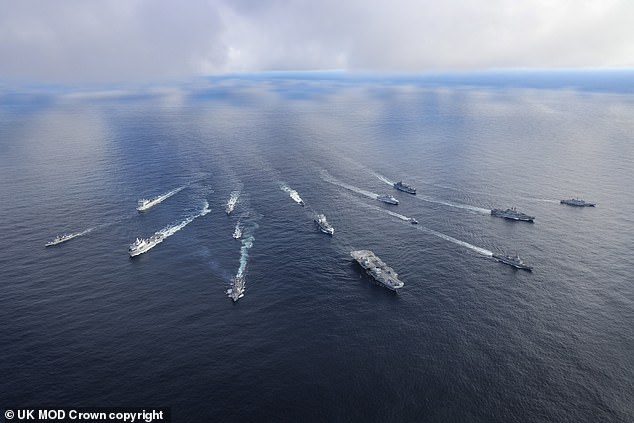

The UK-led Carrier Strike Group merges with NATO Amphibious Task Group and additional Norwegian naval units for a PHOTEX from 13-24 March.
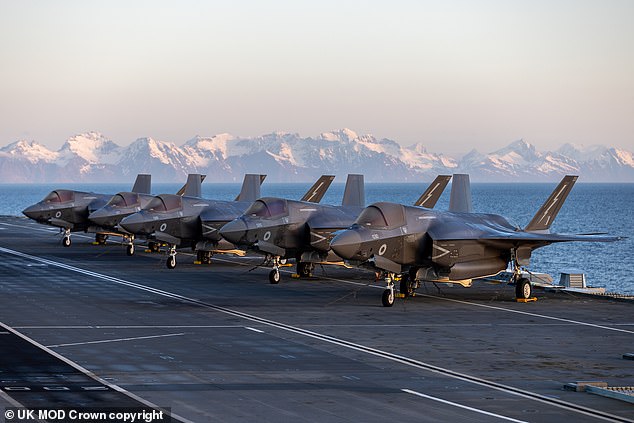

F-35 B Lightning aircraft from 617 Squadron lined up on the flight deck of HMS Prince of Wales at dawn during Exercise NORDIC RESPONSE 24 (File)
But HMS Prince of Wales also broke down in August 2022, a day after leaving on a diplomatic mission to conduct exercises with the US Navy, Royal Canadian Navy and US Marine Corps. .
The aircraft carrier stopped off the Isle of Wight and was towed back to port to identify the problem.
Inspections by divers and engineers found that the carrier’s 33-ton starboard propeller (the same weight as 30 Ford Fiesta cars) had failed and a coupling holding it in place broke.
HMS Prince of Wales was taken to the Babcock shipyard where she was built at Rosyth, Fife, to undergo repairs to a propeller shaft, which took nine months to complete.
At this time HMS Queen Elizabeth was available to replace the Prince of Wales.
